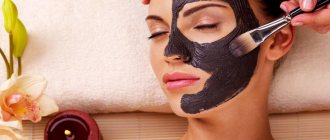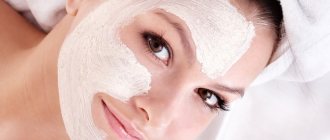“No parabens!” - this slogan swept across the world after the publication of the results of laboratory studies on the effect of these substances on the incidence of breast cancer. In the wake of the scandals, the European Union urgently lowered the threshold concentrations of parabens in cosmetics and banned their use for children under 3 years of age. Manufacturers of organic cosmetics have completely abandoned these preservatives. Is it really so scary, is there any real harm? We will try to rehabilitate parabens, which have been used in more than 80% of cosmetic products for almost 100 years.
Origin of parabens
Esters of para-hydroxybenzoic acid give the name to preservatives parabens. Being derivatives of benzoic acid (and it was used for food preservation 400 years ago), they have bactericidal, bacteriostatic and antifungal effects. Parabens are active against most pathogenic microorganisms.
Parabens are unique substances that ensure the safety of cosmetics, and scientists have not yet found a worthy replacement for them
Parabens are found in some plants as a natural antimicrobial defense. Synthetic preservatives are obtained by reacting hydroxybenzoic acid with alcohols.
Purpose of preservatives.
The main purpose of preservatives is to suppress the growth of bacteria, fungi, mold and yeast . This way the service life of this drug . Preservatives also protect against loss of aroma and appropriate consistency of the cosmetic product.
Why are parabens added to cosmetics?
Only synthetic parabens are used in the production of cosmetics. Their use makes long-term storage and use of the final product possible. In addition, they act as a stabilizer, maintaining the desired consistency of the cosmetic product and combining its components into one whole.
All cosmetics containing water without preservatives become unusable after three days. Imagine that microorganisms that have entered such a cream or lotion from the air after opening the package begin to actively multiply in a favorable environment. As a result, they would end up on our skin or mucous membranes, causing at least irritation and inflammation.
Parabens are stabilizers; they do not react with other ingredients
After high-profile scandals about the allegedly carcinogenic activity of parabens, they are still used in the production of cosmetics. They are used by European, American and even Japanese manufacturers. And Japan is known to have the strictest laws regarding public health.
Names of preservatives in the composition and their permissible quantities
The type of paraben is always written on the packaging of a cosmetic product. Some of them in the list of components may be indicated by a chemical name or as an additive under the letter E:
- methylparaben, E218;
- ethylparaben, E214;
- butylparaben;
- propylparaben, E216;
- isopropylparaben;
- isobutylparaben.
All face, body, hair, and even children's skin care products, as well as sunscreens, contain parabens as preservatives.
Decorative cosmetics contain:
- mascara;
- lipstick and lip gloss;
- liquid eyeliner and liquid shadows;
- concealers, highlighters, bronzers and foundations.
European and Russian manufacturers are guided by a preservative content of no more than 0.4% if one paraben is used, and no more than 0.8% if there are several of them.
History of preservatives.
The history of preservatives dates back to ancient times. The first products used as a preservative were table salt and ethyl alcohol . During the nineteenth and twentieth centuries , various types of synthetic substances . Sulfuric, benzoic and salicylic acids were used . Antibiotics were also very popular, but due to their side effects their use was abandoned. Parabens are currently the most commonly used type of preservative in the cosmetics industry . antimicrobial properties was obtained , but it was effective only in an acidic environment . By subjecting parahydroxybenzoic acid with aliphatic and aromatic alcohols pH range were created .
Possible harm of parabens
Allergic reactions to parabens have been well studied and are rare. They are possible if the product is applied to damaged skin. But in practice, even people with chronic dermatoses tolerate such cosmetics well.
Methylparaben poses a certain danger if it interacts with sunlight. It is better not to use cosmetics containing it in the summer, as the skin reacts more strongly to ultraviolet radiation and the aging process intensifies.
Parabens do not enter the general bloodstream through the skin and are not able to harm the unborn child.
The use of cosmetics with parabens during pregnancy will not harm the unborn child, since the concentration of these substances is very small and they do not enter the systemic bloodstream.
<…> the increase in fetal malformations does not depend at all on whether a woman uses soaps, cosmetics with parabens and other skin care products. Your worries about this will do more harm than parabens.
Elena Berezovskaya, obstetrician-gynecologist
https://klubkom.net/posts/51028
In 2008, a scientific review was published, which presented the results of studies that proved that parabens in cosmetics are not capable of causing any harm to health, even with constant use. They do not accumulate in the body and are quickly eliminated, even if taken orally or administered intravenously.
Harm-benefit ratio
A scientific controversy that began about 20 years ago concerned the hormonal activity of parabens and their ability to accumulate in the body, causing breast cancer. However, a refutation followed in 2006. American and German scientists have not found a cause-and-effect relationship between cosmetics with parabens and an increased risk of cancer.
As for the ability of parabens applied to the skin to affect hormonal balance, it has been greatly exaggerated. In 2005, the results of studies were published confirming that the estrogenic activity of parabens in cosmetics is negligible and cannot affect hormonal levels and reproductive function. Thus, the possible harm from parabens is significantly inferior to their beneficial properties.
Parabens do not have any toxic effects on the human body when used in concentrations acceptable in cosmetics. <…> Preservatives that are used instead of parabens are often poorly studied or cause more harm. For example, methylchloroisothiazolinone and methylisothiazolinone (Methylisothiazolinone, Methylchloroisothiazolinone, MIT) are considered highly allergenic. <…> If you are still worried about the possible estrogen-like effect of parabens, then avoid products that contain Propyl-, Isopropyl-, Butyl-, Isobutylparaben.
Nina Sereeva, dermatovenerologist
https://news.rambler.ru/diy/38969131–10-dokazannyh-faktov-o-parabenah/?updated
How to protect yourself from the negative effects of parabens
The composition contains the designations E-parabens and sodium salts. Cosmetologists advise buying cosmetics with a short shelf life. It is necessary to buy cosmetics in tubes and packaging with a dispenser. There is no need to buy it in jars. Because to prevent spoilage of the cream, an increased dosage of preservatives is added to it.
You can completely protect yourself from the influence of preservatives if you use homemade cosmetics. At home you can prepare cream from natural ingredients. This is the best alternative to deodorants filled with chemicals.
If you are afraid of parabens
If you are not convinced by the research data and you still fear for your health, read the list of ingredients on the packaging of the cosmetic product and choose one that contains paraben with the lowest hazard class.
Table: list of parabens used in cosmetics
| Paraben | EWG SkinDeep hazard rating out of 10 points |
| methylparaben (E218) | 4 |
| ethylparaben (E214) | 4 |
| propylparaben (E216) | 5 |
| butylparaben | 7 |
| benzylparaben | 2 |
| isobutylparaben | 7 |
| isopropylparaben | 7 |
You can minimize possible harm by following several rules:
- do not leave makeup on your face overnight;
- do not use sunscreens with methylparaben;
- stop using the product if you experience side effects;
- pre-test cosmetics if they contain parabens that are new to you.
Paraben should be last on the ingredient list. Do not buy a product if the preservative is not at the end, but at the beginning or middle of the list; its concentration may exceed the permissible level.
What are parabens and where are they used?
Parabens are esters of para-hydroxybenzoic acid used in the production of cosmetics. If the acid itself is quite often found in nature in plants and oils, then parabens are completely chemical in origin.
The most common in production are: butylparaben, methylparaben, propylparaben. All of the listed substances exhibit good antiseptic properties, which leads to their use as an inexpensive preservative almost everywhere, including food products. Thanks to this property, cosmetic products do not deteriorate, mold does not appear in them, and their shelf life is extended.
According to the latest data (US Food and Drug Administration), the use of parabens in the production of cosmetic care products in the world has increased 1.7 times compared to 1981. Today, parabens can be found in approximately 80% of personal care products (Pouillot A. J Med Esthet Chir Dermatol 2006; v. 33, p. 187–90.)
Parabens are used to produce the following products:
- - shampoo and hair styling products
- - creams and lotions for face and body
- - shower gel
- - liquid soap
- - shaving lotion
- — children's cosmetics
- - decorative cosmetics
- - wet wipes
- - toothpaste
- - deodorants
- - perfume
- – medicines (syrups, ointments, tinctures, antiseptics)
Opinion polls show that consumers aged 21–65 years use approximately nine cosmetic products per day. In a study of these products, parabens were found in 77% of leave-on and 99% of leave-on makeup products (Rastogi SC, Contact Dermatitis 1995; v.32, p. 28–30). European, Asian and American cosmetics also contain harmful parabens.
A study of Danish cosmetic products found that out of 751 products, 36% contained parabens. In Norway, parabens were present in 32% of 117 baby care products (Eriksson E. “Substance flow analysis of parabens in Denmark complemented with a survey of presence and frequency in various commodities” J. Hazard Mater 2008;240–259). Another estimate is that dangerous butylparaben is present in 13%, while propylparaben and/or methylparaben are present in 48% of cosmetics. (Masten SA Butylparaben review of toxicological literature butylparaben. Rev Toxicol Lit 2005:1–64).
Designations in cosmetology
Handmade cosmetics are very popular today. There is no doubt that it is the most effective and safest for the skin. However, when girls do not have the time or opportunity to make the cream themselves, they go to the store.
Notation:
- Common parabens are E218, E214, E216, E214, E219.
- Specific parabens – benzylparaben, sodium salts, isobutylparaben.
By the way, sometimes decorative cosmetics also contain these substances. Therefore, be extremely careful before purchasing any skin product for yourself.
What do the studies say?
For about a decade, the debate on assessing the safety of parabens has not subsided. During this time, the size of the doses, which, according to scientists, will not harm us, have been questioned more than once. However, the very fact that these doses have been steadily reduced over the past decade (for example, Propylparaben and Butylparaben are conditionally "safe" at concentrations below 0.19% relative to the 0.4% that was previously effective and considered safe) is at least cause for concern. Think carefully before using exclusively cosmetics that contain them. Most substances are still being assessed and tested by global committees.
Parabens are generally considered safe in minimal doses, and these doses are still being monitored, meaning the safe minimum is constantly changing.
Despite this, the compounds of these substances are included in the list of safe preservatives. Proponents of their use present their arguments, in particular, claiming that there are natural parabens - esters of p-hydroxybenzoic acid, found in nature - in blackberries, raspberries and vanilla. Another undoubted advantage is their wide range of effects.
How do you know that an additive is included in a product?
Manufacturers use different methods to designate the ingredients included in products:
- the full chemical name of the additive (or group) together with the alphanumeric code – propylparaben (parabens) E216;
- only the name of the substance;
- separate code indication.
The most universal option, suitable for international trade, is a description of the product components in a foreign language - propylparaben E-216.
Should you trust organic cosmetics?
Parabens and the harm they cause to the skin have scared modern women so much that some have switched to using organic cosmetics. Few people understand that this is not a solution at all.
Remember, any cosmetics that are sold in the store contain at least a little paraben. Its addition as an ingredient is simply necessary because it helps products last longer. Imagine how quickly cosmetic companies would go bankrupt if they used only natural ingredients in their production.
If a cosmetic says that it is organic or natural, it just means that the proportion of parabens in it is lower than usual. But do not forget that this affects the shelf life. It is for this reason that you carefully look at what is written on the package before you buy yourself a shampoo, cream or anything else.
Bad fame
Despite constant research and a huge number of reports and opinions, we are still very skeptical about parabens and the possible effects they can have on the human body. Opinions vary radically; there are both extremist supporters and uncompromising opponents.
At the same time, many cosmetic companies see this “paraben war” as a good marketing ploy, encouraging people to buy products without parabens and other substances and playing on their fears and concerns about their health. They can often be found in popular pharmacies, but it is worth adding that these cosmetics usually have a shorter shelf life than cosmetics that contain parabens, which act as a preservative.
So the question is, if there is no reason not to use parabens, then what's the point? Isn’t the excitement connected with the desire to use something no less scandalous, because some additives need to be added, otherwise the shelf life of cosmetics will be short? Or is this a ploy by marketers that allows them to promote a new product and charge a higher price for it?
What cosmetics to use
If you want to use the safest products for your skin, then handmade cosmetics are the best option. Although you can choose the best option in the store if you look carefully at the composition. Please note that vitamins C and E, tea tree oil, eucalyptus or propolis are present. It also has its drawbacks. Such cosmetics cannot be used for longer than 2-3 weeks, then they simply lose their properties.
Paraben - what is it, how to avoid it? Probably not at the moment. As you can see, if you buy natural skin cream, it has a short shelf life, so it is not very profitable. Not every woman has the opportunity to update her cosmetics every few weeks.
Cosmetics “Paraben Free”: believe it or not
Very often on store shelves you can find cosmetics with very tempting labels that shout that they contain no parabens. Is this really true? As mentioned above, no alternative to this substance has been found.
Therefore, if you see a shampoo without parabens, you should not immediately believe that this is really the case. Manufacturers in this case act very cunningly. They simply change the name of the substance. If you are not an avid chemist, then don’t even pay attention to this. For example, it may be written that the composition contains methyl paraoxybenzoate. In fact, it is nothing more than methylparaben.
Alternative remedies
Large cosmetic companies are now constantly looking for a product that will serve as an alternative to paraben. However, at the moment, no substance with the same properties has been found.
Decorative cosmetics also contain them in their composition, because they are the best preservative among all, which prevents the growth of bacteria.
It is worth noting the fact that it is not only parabens that are scary. Essential oils and alcohol can also cause harm. They dry out the skin greatly, which worsens its condition.
It is simply impossible to produce cosmetics without preservatives. There is only one way out - to completely change the entire production system and use innovative technologies. However, this requires a large investment, and cosmetic companies simply cannot afford it.
conclusions
Thus, the following conclusions can be drawn about methylparaben:
- It is quite harmless, found in gifts of living nature, easily destroyed in the human body and soil, and has no tendency to accumulate in healthy tissues. In comparison with other types of preservatives, it is non-toxic and does not have carcinogenic or allergenic effects.
- Research and the harm of the compound remains in question.
- Since the manifestation of bactericidal and fungicidal properties does not require a high content of methylparaben in the product, its concentration is usually not high. A content of methylparaben in human tissue of no more than 10 mg/kg body weight is considered safe.
- May appear under the name methylparaben, E-218, nipagin, para-hydrobenzoic acid methyl ester, para-hydroxybenzoic acid methyl ester, methyl 4-parahydrobenzoate.
- Approved for use in most European countries and Russia.











